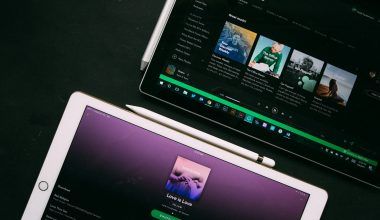If you’re a music fan or someone just diving into the world of songs, albums, and playlists, you might have come across the term “EP.” It often pops up in artist announcements, music streaming platforms, or even in casual conversations about new releases. But what does ep mean in music terms? Let’s break it down in the simplest way possible and explore everything you need to know about EPs.
Understanding the Basics: What Is an EP?
what does ep mean in music terms To put it simply, EP stands for “Extended Play.” It is a type of music release that is shorter than an album but longer than a single. Think of it as the middle ground between a single song and a full-length album. While albums usually have 8 to 15 tracks or more, an EP typically contains 3 to 6 songs. This makes it a perfect choice for artists who want to share more than just a single song without committing to the extensive process of creating a full album.
Why Do Artists Release EPs?
There are several reasons why musicians choose to release an EP. Here are a few:
- Experimentation: EPs give artists the freedom to experiment with new sounds or styles. Since it’s a smaller collection of songs, they can take creative risks without worrying about how an entire album might be received.
- Teasing the Audience: Sometimes, an EP serves as a teaser for a full-length album. Artists might release a few songs to build excitement and keep fans engaged.
- Budget-Friendly: Producing an EP is generally more affordable than creating a full album. This is especially beneficial for emerging artists who might not have the resources to fund a larger project.
- Quick Turnaround: Compared to albums, EPs take less time to produce. This allows musicians to share their work more frequently and stay relevant in the fast-paced music industry.
- Filling the Gap: If there’s a long wait between albums, an EP can keep fans satisfied and maintain the artist’s presence in the music world.
The History of EPs
The concept of EPs dates back to the early days of vinyl records. In the mid-20th century, vinyl records came in different formats, including singles, EPs, and LPs (long play albums). EPs were introduced as a way to include more songs than a single but keep the cost lower than a full album. They became particularly popular with rock and roll and pop artists in the 1950s and 1960s.
As the music industry evolved, so did the format of EPs. In the digital era, the physical constraints of vinyl are no longer an issue, but the idea of an EP has persisted. Today, EPs are available on streaming platforms, digital downloads, and even as physical copies for collectors.
How Is an EP Different from an Album or a Single?
While it might seem a bit confusing at first, the difference between an EP, an album, and a single is actually quite straightforward:
- Single: A single is usually one song, though it may occasionally include a B-side or an additional track.
- EP: An EP has more songs than a single but fewer than an album. It’s a concise collection of tracks, often grouped around a specific theme or mood.
- Album: A full-length album typically includes 8 to 15 or more tracks. Albums are considered larger, more comprehensive projects that often tell a cohesive story or showcase a broader range of an artist’s work.
Famous EPs That Made a Mark
Many artists have used EPs to make a big impact in the music world. Here are a few noteworthy examples:
- “The Fame Monster” by Lady Gaga: Originally released as an EP, this collection of songs became a massive hit and featured tracks like “Bad Romance.”
- “My Dear Melancholy,” by The Weeknd: This emotionally charged EP gave fans a raw and intimate look at the artist’s thoughts and feelings.
- “Collide” by Tori Kelly: This EP showcased Kelly’s incredible vocal range and songwriting skills, helping her gain recognition in the industry.
The Role of EPs in a Streaming Era
In today’s music landscape, where streaming dominates, EPs have become even more relevant. With shorter attention spans and the ability to easily skip songs, listeners often prefer smaller, digestible releases. EPs cater perfectly to this trend, offering a quick but satisfying listening experience.
For new artists, releasing an EP can be a strategic move. It’s a great way to introduce themselves to the audience without the pressure of delivering a full album. Established artists, on the other hand, use EPs to experiment or stay active between major album releases.
How to Spot an EP
If you’re browsing a music platform or a record store, how do you identify an EP? Here are some clues:
- Length: Most EPs are between 15 to 30 minutes long.
- Number of Tracks: EPs usually have 3 to 6 songs.
- Labeling: Many artists and platforms explicitly label their releases as EPs, making it easy to spot.
Creating Your Own EP Playlist
If you love exploring new music, creating a playlist of EPs is a fun way to discover artists and enjoy their creative work. Mix and match genres, or focus on a specific mood or theme. EPs are often packed with the best of what an artist has to offer, so you’re likely to find some hidden gems.
Final Thoughts: Why EPs Matter
So, what does ep mean in music terms? It’s more than just a format; it’s a creative outlet for artists and a treat for listeners. EPs strike the perfect balance between singles and albums, offering a snapshot of an artist’s talent and vision. Whether you’re a fan or a musician, understanding EPs opens up a whole new world of music to explore and appreciate.
Next time you hear someone mention an EP, you’ll not only know what does ep mean in music terms what it stands for but also why it’s such a vital part of the music industry. So go ahead, dive into the world of EPs, and enjoy the unique listening experience they offer!
For further reading, explore these related articles:
For additional resources on music marketing and distribution, visit DMT Records Pvt. Ltd..






